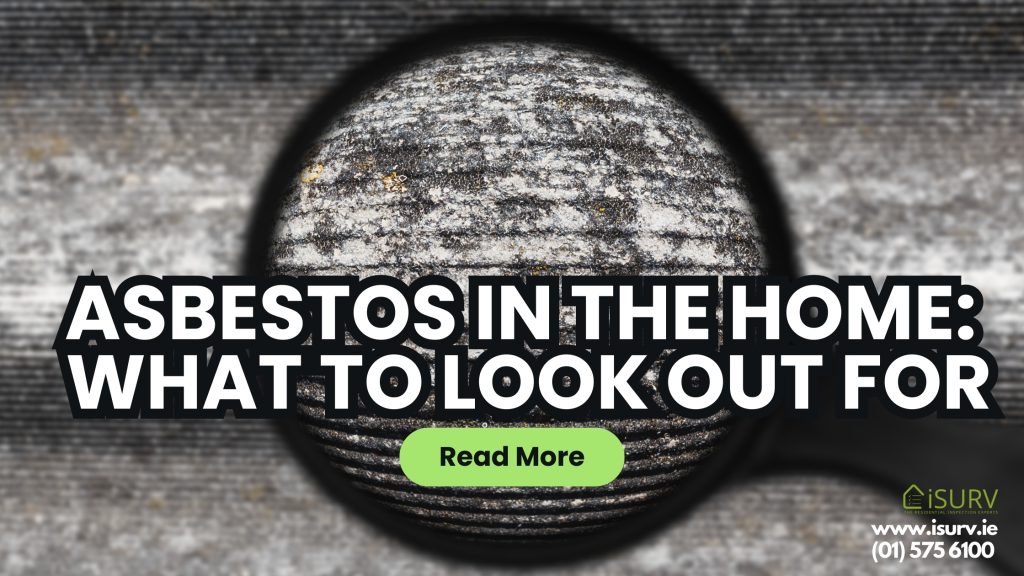
When it comes to home safety, few hazards are as misunderstood as asbestos. While most people have heard of it and know a little about its dangers, it’s crucial to understand what asbestos is and why it can pose a significant health risk.
What is Asbestos?
Asbestos refers to a group of naturally occurring mineral fibres known for their strength and resistance to both heat and chemicals. Due to these properties, asbestos was widely used in the past for insulation, fireproofing, and as a component in various building materials. In Ireland, Asbestos Containing Materials (ACMs) were only phased out and banned between 1998 and 2000. This means that properties built or refurbished in the 1970s and 1980s are likely to contain asbestos.
Is It Dangerous?
Yes! The danger of asbestos lies in the possibility that the fibres within ACMs can become airborne and inhaled. Breathing in asbestos fibres can lead to severe health issues, primarily cancers of the chest and lungs. These diseases take time to develop, often between 15 and 60 years after exposure. However, asbestos does not pose a risk to health as long as it remains undisturbed and in good condition.
Common Areas to Find Asbestos in the Home
1. Floor Tiles
Certain vinyl floor tiles may contain asbestos. When removing old floor coverings, be cautious as these tiles may have been simply covered over and hidden. Breaking these tiles during removal can release asbestos fibres into the air. It’s highly recommended that you do not attempt to remove these tiles yourself but instead engage a specialist asbestos removal contractor.
2. AIB Soffit
AIB (Asbestos Insulating Board) soffits, often found in the external parts of buildings, can usually be managed and encapsulated in place. However, if you’re undertaking significant refurbishment or if the soffit is in poor condition, consider replacing it. Any maintenance work involving gutters, eaves, or the roof should be conducted carefully to avoid disturbing the AIB soffit.
3. Ceilings
Textured ceilings, known as stipple, popcorn, or Artex, can contain asbestos. While not all textured ceilings contain asbestos, a general rule of thumb is that ceilings built before 1985 are likely to contain ACMs. If you’re planning refurbishment work, it’s wise to have the ceilings tested and analysed by a laboratory.
4. Insulation
Loose fill or blown-in insulation can also contain asbestos. This type of insulation, which has a pebble-like appearance and is typically grey or brown, can be difficult to remove due to the loose nature of the material and the risk of airborne fibres during removal. If you suspect asbestos in your insulation, seek specialist advice.
5. Hot Press
AIB board was often used within the floor and ceiling of hot presses to retain heat. Damage to these boards, such as from penetrating pipework, can release asbestos fibres into the air, posing a significant health risk. If you notice damaged AIB boards in your hot press, it’s essential to consult a professional for proper removal.
Asbestos can be found in many areas of older homes, and while it doesn’t always pose an immediate danger, it’s vital to handle any suspected ACMs with care. If you have concerns about asbestos in your home, always seek specialist advice and never attempt to remove it yourself.
For more information or to schedule a survey, visit www.isurv.ie or contact us at info@isurv.ie.
